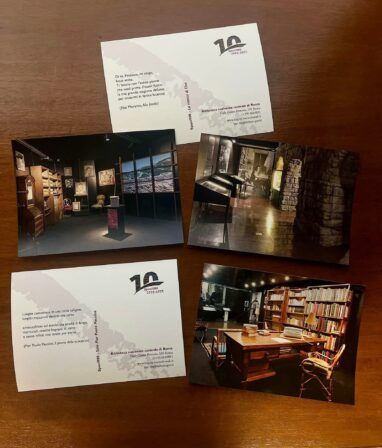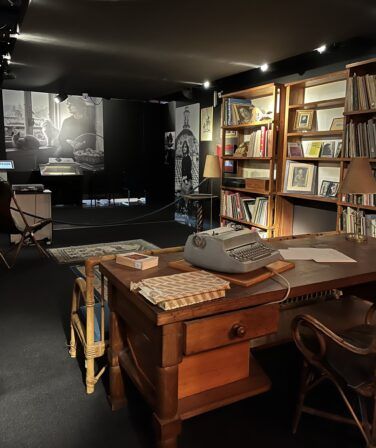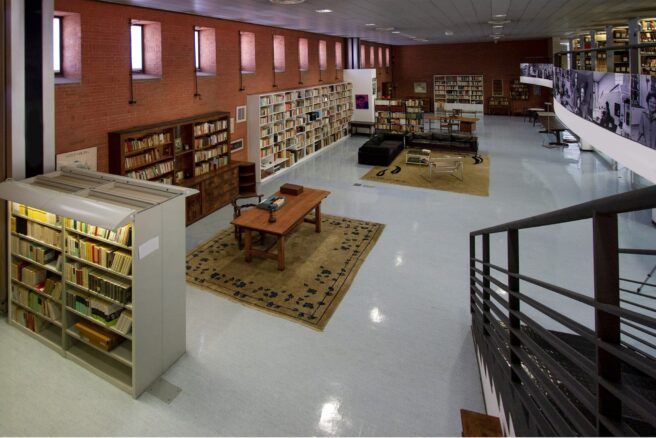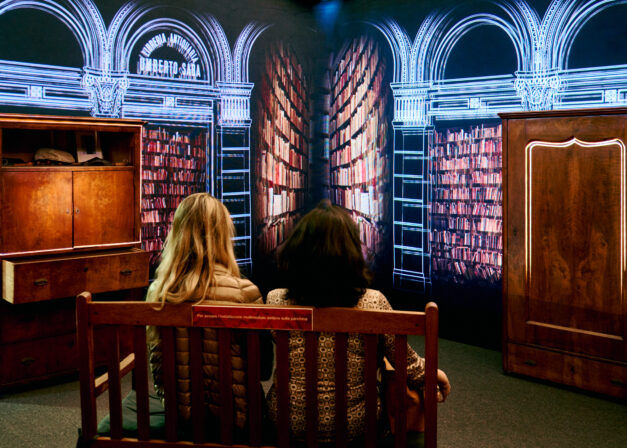This year, the National Central Library of Rome celebrates the tenth anniversary of Spazi900, a permanent exhibition space dedicated to promoting the collections and authors of contemporary Italian literature.
Established ten years ago, Spazi900 was the first museum in Italy devoted to contemporary literature housed within a public library. Since its inception, the National Central Library of Rome has continuously enriched this unique literary journey with new donations, acquisitions, and multimedia installations that offer visitors an immersive experience. To mark this important milestone, the museum has been further enhanced with the display of significant new works, reaffirming Spazi900’s identity as a living, evolving museum.

The museum brings to life key literary figures of the 20th century through themed rooms and sections dedicated to individual authors. These spaces intertwine manuscripts, books, personal objects, artworks, and original furnishings. The project aims to preserve and make widely accessible the Library’s 20th-century literary heritage, which includes author collections such as those of Enrico Falqui, Elsa Morante, Giovanni Macchia, and Giorgio Vigolo, as well as archives and original manuscripts by some of Italy’s most prominent writers—among them Gabriele d’Annunzio, Grazia Deledda, Umberto Saba, Giuseppe Ungaretti, Pier Paolo Pasolini, and Italo Calvino.
An immersive journey through 20th-century literature unfolds across two “Writers’ Galleries,” each centred around a focal point: The Room of Elsa, which recreates the atmosphere of Elsa Morante’s writing studio using her original furnishings, and the Pier Paolo Pasolini Hall. Additional rooms showcase handwritten documents and personal items belonging to Grazia Deledda, and portraits of fellow writers by Carlo Levi, setting the stage for the broader exploration of literary heritage.

The Italo Calvino Room, located within the Library, is closely connected to Spazi900. It preserves the author’s archival and bibliographic collection, along with furnishings, objects, and artworks from his former residence in Rome’s Campo Marzio district.

Designed with schools in mind, the project offers teachers and students a dedicated space for discovery, deeper engagement, and critical reflection.
Visitors can explore original manuscripts and their digital counterparts in a unique opportunity to engage directly with key works of 20th-century Italian literature. The experience is enriched by multimedia installations, archival video footage from Teche Rai, and audio recordings from the Istituto Centrale per i Beni Sonori e Audiovisivi. Supplementary materials—including biographical cards available in both print and digital formats—are accessible via QR codes and the dedicated Spazi900 App. Students can discover autograph manuscripts and first editions of major literary works, from the manuscript of La Pioggia nel pineto by d’Annunzio, to the early drafts of Ragazzi di vita and Una vita violenta by Pasolini, or immerse themselves in Umberto Saba’s Il Canzoniere through engaging multimedia narratives.

Admission to the museum is free, and visits are available during the Library’s regular opening hours.
Text by Angelina De Salvo